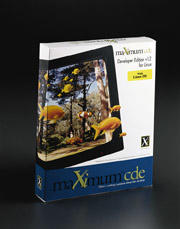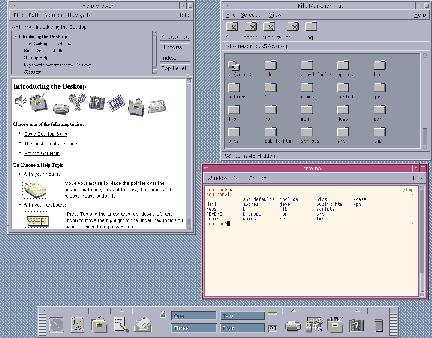
The target market for maXimum cde/OS is enterprises wishing to run a commercially supported Linux distribution and the well-known CDE on their desktop workstations.

Manufacturer: Xi Graphics
E-mail: info@xig.com
URL: http://www.xig.com/
Price: $199.95 US; $349.95 US, Developer's Edition
Reviewer: Jeff Alami
On July 10, 1998, Xi Graphics announced their decision to develop and sell their own distribution of Linux. Xi Graphics' maXimum cde/OS incorporates Red Hat Linux 4.2, Xi Graphics' Accelerated-X Display Server, and the Common Desktop Environment (CDE) used in many commercial UNIX installations. The target market for maXimum cde/OS is enterprises wishing to run a commercially supported Linux distribution and the well-known CDE on their desktop workstations.
I did not receive a boxed set from Xi Graphics, but simply a CD in a jewel case. My assumption is that they would most likely provide the same box and documentation as their CDE product, maXimum cde. I installed the distribution on a Pentium 166 with 24MB RAM, a 4.3GB hard drive and an S3 Trio64 video card.
After creating the installation floppies, I booted from the floppies, which launched the installer program. The installer for maXimum cde/OS is practically the same as Red Hat Linux 4.2. I used fdisk for partitioning, which can be difficult for a beginning user, but a competent UNIX system administrator should not encounter any difficulties. No choices were offered as to which packages were to be installed; the program simply installed 133MB worth of software. After installing the necessary packages, the installer ran the Accelerated-X registration and configuration program. The program did not autodetect my video hardware; I had to select the video card from a supplied list.
All things considered, the installation is not difficult for the experienced user. Given that the target market is not the consumer, this may be warranted, much like the installation for Caldera OpenLinux. In contrast, the latest version of Red Hat Linux has an easier installation, with automatic disk partitioning setups, easy package choices and video autodetection.

The Common Desktop Environment
The Accelerated-X configuration program allows the user to choose which video card, input device and monitor are to be used. If you prefer editing text files, the configuration information is available in the file /etc/Xaccel.ini. Configuration for CDE is generally quite difficult compared to other desktop environments available for Linux. Reading through the CDE manual is recommended to understand how applications are added and how the environment can be configured.
Most of the other configuration features are inherited from Red Hat Linux 4.2. The control panel allows for user configuration, time and date, printer, network, modem and package configuration.
Xi Graphics maXimum cde/OS features the Accelerated-X Display Server and maXimum cde, Xi Graphics' CDE implementation. Other featured software included in the package are Adobe Acrobat Reader 3.0, ImageMagick, Netscape Communicator 4.05, the Xanim movie viewer and the xmcd CD player. These applications are integrated into the CDE desktop.
I didn't receive any documentation, so I cannot comment on its quality. However, good sources of documentation would include the maXimum cde manual (for learning how to use CDE) and the Red Hat Linux 4.2 User's Guide, available at Red Hat Software's web site.
Technical support for installation of maXimum cde/OS is included at no charge for 30 days after registration. Corporations can purchase additional support packages from Xi Graphics. Of course, you can always go to traditional channels of Linux support, including newsgroups and mailing lists. Since it is so similar to Red Hat 4.2, many Linux users will be able to provide support.
At under $200, maXimum cde/OS is sold at the same price as maXimum cde without the Linux distribution. I would suggest getting the product with the operating system for two reasons. First, the Linux distribution included has been configured and tested with CDE. Second, you can still install their display server and CDE product on another distribution, from the /cde directory on the distribution CD. Of course, license restrictions still apply.
Xi Graphics has provided an excellent product for corporate UNIX users wanting to take advantage of Linux without a steep learning curve. Most commercial UNIX administrators are familiar with CDE on desktop workstations, and expect an integrated and supported package as provided in maXimum cde/OS. The Accelerated-X Display Server is also a benefit for graphical workstations, as it provides better speed than XFree86 for many video cards. Of course, maXimum cde/OS does have its limitations, namely the lack of glibc support found in the latest Linux distributions.